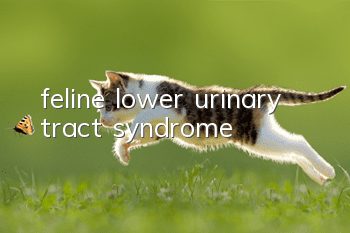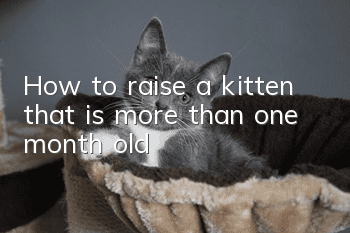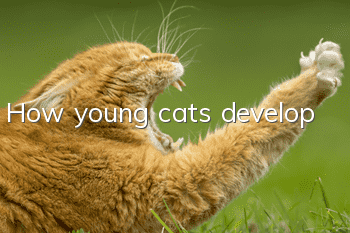feline lower urinary tract syndrome

Feline lower urinary tract disease (FLUTD) refers to a series of symptoms that affect the lower urinary system of cats. Some people think that FLUTD refers to a specific disease, but this is actually a misunderstanding. Simply put, diseases of the bladder and urethra (including the urethral opening) can be regarded as included in FLUTD, and FLUTD is their collective name. Urinary system diseases in cats are not so easy to detect in the early stages, because cats, unlike dogs, can pee in public. Cats usually don’t like to be seen when peeing, so cat owners usually have to wait until they are very serious. You will only find out there is something wrong with your cat when the time comes, and sometimes it is too late. How can we detect something wrong with our cat earlier and send it to the doctor as soon as possible?
Male cats are more likely to suffer from lower urinary tract diseases
Why do we say that FLUTD is the mysterious killer of cats? Because many times, we can’t find the cause of the disease at all. In some sick cats, no obvious causes such as tumors, bacteria, stones or crystals can be found during medical examination, but the cats will develop hematuria or even urethral obstruction. This disease is called feline spontaneous cystitis (FIC). ). It is understood that 50 to 60% of all feline lower urinary tract diseases are spontaneous cystitis. Some studies believe that spontaneous cystitis is closely related to psychological stress and environmental changes, because many cats have environmental changes or new members in the family before they become ill. Therefore, cat owners may have to move or increase the number of pets. After that, you should pay more attention to the cat's condition, accompany and comfort the cat more, which will help reduce the risk of illness.
The urethra of male cats is long and narrow, which gives male cats an inherent "advantage" over female cats when it comes to urethral obstruction. Regardless of the cause, FLUTD may cause urethral obstruction in male cats. Sometimes it is stones, sometimes it is peeling bladder mucosal epithelium, or a mixture of the two. Therefore, male cats suffering from this disease are very dangerous. When the urethra is blocked, the kidneys are unable to remove toxins from the blood and maintain fluid and electrolyte balance in the body, and cats can develop uremia, electrolyte imbalances, and heart failure.
Early medical treatment is the key
Repeated urinary tract obstruction can cause irreparable damage to kidney function, leading to kidney failure. Therefore, for male cats with multiple recurrences of the disease, urethrostomy surgery is currently the most effective way to solve this problem. Although surgery cannot solve the problems of crystals and bladder mucosal epithelial peeling, cats without urethral obstruction can live longer and healthier lives.
Therefore, early detection of the condition is critical to treatment. If your cat has one of the following symptoms, you should pay special attention to it. It may have FLUTD. If your cat is a boy, be extra carefulBecause it is very likely that its urethra is blocked and it cannot urinate, so you need to go to the veterinarian immediately.
Signs of FLUTD
1. Pee very hard, sometimes only a few drops come out each time. Sometimes owners mistakenly think that cats are constipated;
2. Urine is red or light red;
3. The frequency of peeing increases (that is, you often have to go to the toilet);
4. Licking his private parts all day long, an abnormal number of times;
5. Suddenly it no longer peed in the original place (for example, it usually peed in the cat litter box, but suddenly peed in the bathroom);
6. Crying or screaming in the cat litter box (some cats will also cry near the cat litter box);
7. Peed on the floor next to or near the cat litter box.
8. It eats less than before, loves to sleep, or feels uncomfortable when you pet or pick it up.
Live a healthy life and reduce the risk of recurrence
What should you do if you unfortunately have a cat with FLUTD at home? There is nothing we can do! Changes in life and diet can reduce the risk of recurrence in cats.
Eat small meals often. Soak the cat food in broth or water until soft or replace it directly with canned cat food. Eating small, frequent meals helps digestion of food. Dry cat food contains only 10% moisture, while canned food contains 70% moisture. If your cat rarely drinks water on its own, feeding canned food is a good option. But be careful not to feed canned food containing seafood. The high protein and magnesium content of seafood have a negative impact on FLUTD. If your cat has a history of struvite crystals/stones, it may be best to feed a prescription diet that acidifies the urine to prevent recurrence.
Let your cat drink as much water as possible. As long as it is willing to drink, fish soup and broth are all very good choices. A waterfall water dispenser can also increase your cat’s interest in drinking water.
Keep the cat litter box clean and hygienic at all times. If there is more than one cat in the home, try to provide as many litter boxes as possible, as research has shown that some cats may develop FIC due to psychological stress caused by not liking to share litter boxes with other cats. In addition, reduce changes in the home environment, provide cats with cat trees to climb, scratching posts, and toys to chase. These can help reduce your cat’s stress.
Obesity is the cause of many diseases. Neutering and keeping cats slim is a must!
- What to do about cat anal cysts? Diagnosis and treatment of cat anal cysts!
- What should I do if my kitten is timid and afraid of people?
- Analysis of causes of vomiting in American shorthair cats
- What should I do if my cat has a stress reaction?
- Why does the cat drink water frequently?
- Why do Maine Coon cats shed hair so often?
- Four ways to induce vomiting in cats quickly
- What does week cat mean? How to tell if the cat you buy is a Zhou cat?
- Are there any benefits to neutering female cats?
- The bowl that pets use every day is dirtier than the toilet! Wash frequently!



